The Wrangler is often called ‘America’s favorite off-roader.’ And its success has always been driven by its capable engines.
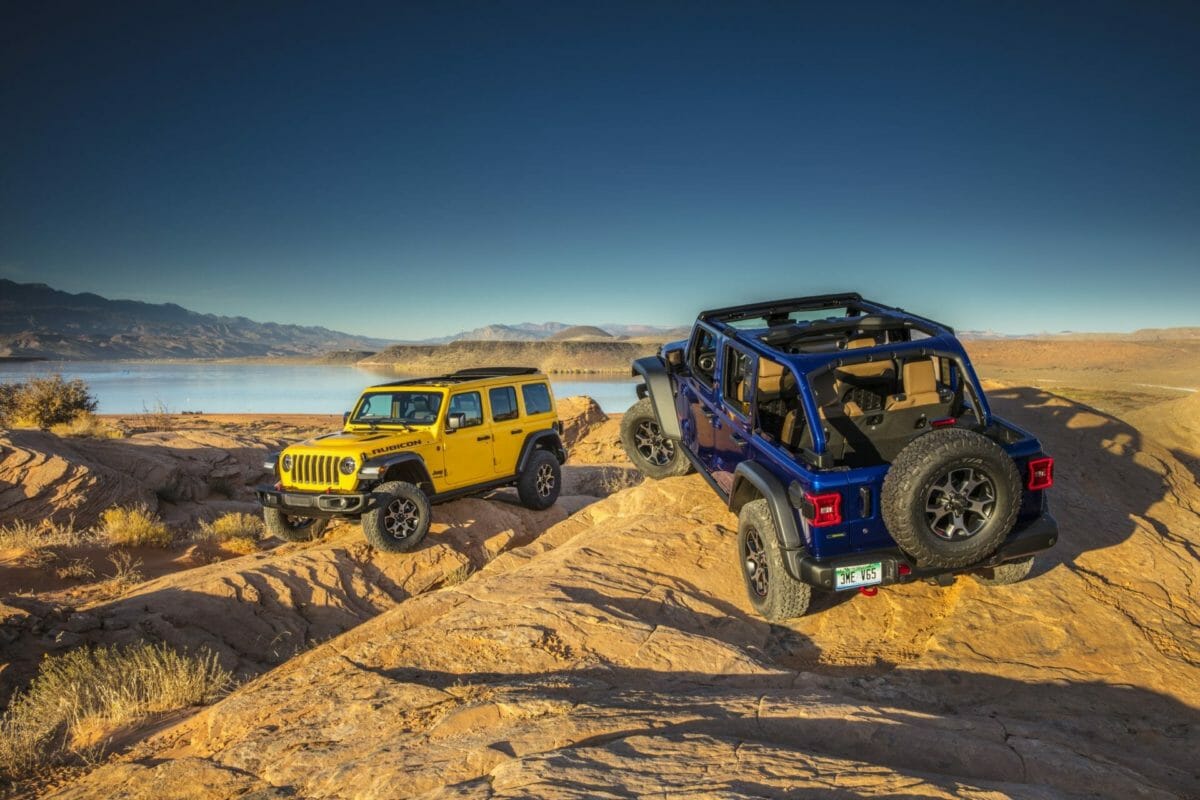
The Jeep Wrangler is an automotive legend that has roots stemming from WWII. America had reached out to the auto industry when the country needed a tough and reliable vehicle that could transport equipment for the war.
Auto manufacturers were provided a list of requirements and asked for a prototype to be designed within 50 days. The Army asked 135 companies and two responded: Bantam and Willys-Overland.
Then the Army realized that Bantam was too small, so Ford and Willys would be chosen to work on their special project. Ford came out with the Pygmy and Willys came out with the Quad — and both looked very similar to Bantam’s prototype, the BRC.
The U.S. Army liked Willys’ version the best but needed a lot of vehicles, so both Ford and Willys made their vehicles using the Willys blueprint. Willys called theirs the MB, and Ford called theirs the GPW.
Ford ended up changing the front grille from having 11 slots to nine because it was cheaper and faster to manufacture. This would be the start of Jeep‘s famous grille, which would eventually have seven slots. That seven-slot grille is seen on roads everywhere today. Although many associate the Jeep name with the Wrangler, it’s actually the CJ that owns the honor of wearing the badge first.
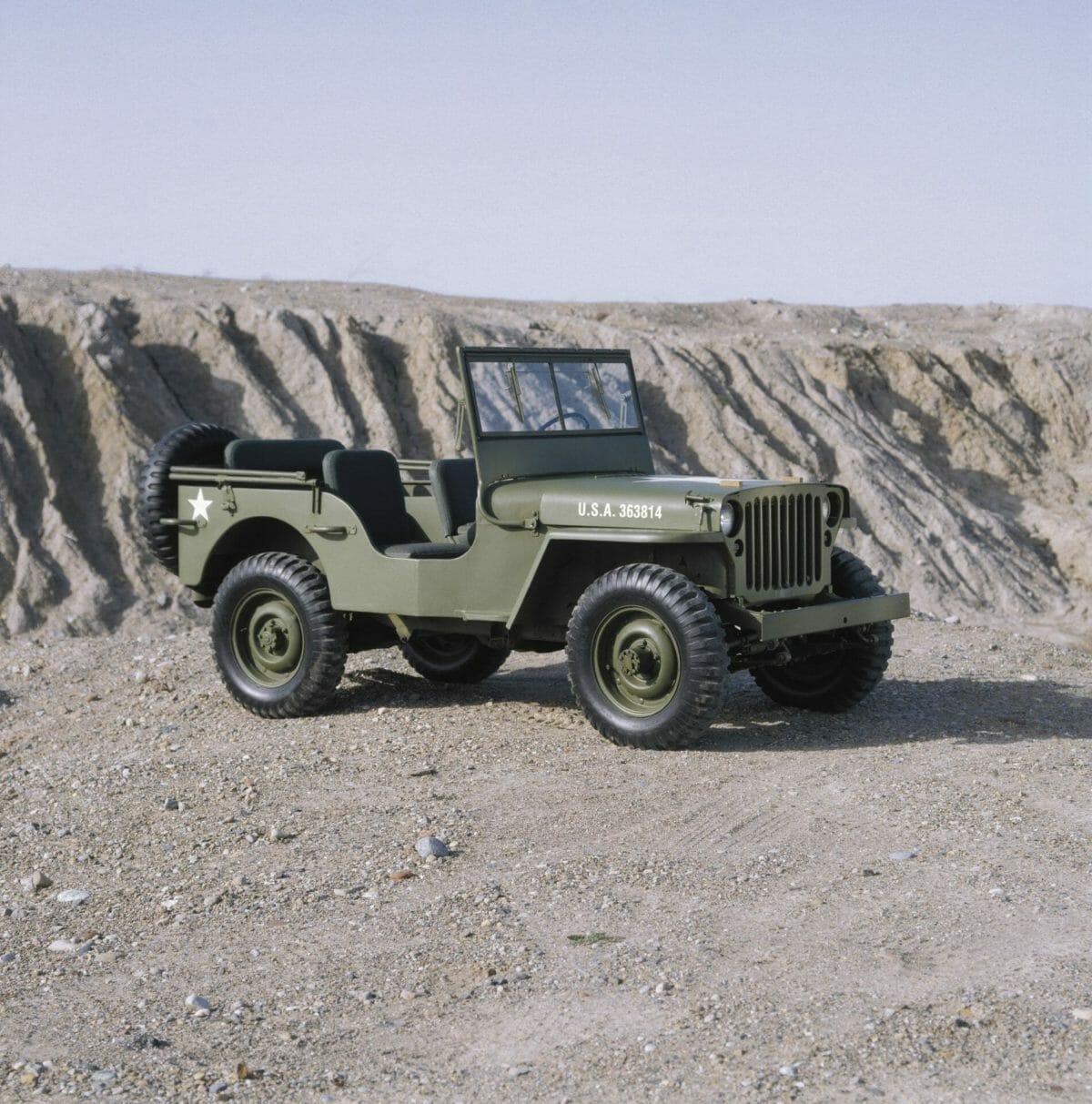
First-ever Jeep: CJ (Civilian Jeep)
The first vehicle to ever receive the Jeep name was the CJ, which stood for Civilian Jeep. The CJ came out right after the war and was around until 1986. In over 40 years, there were only 1.5 million CJs produced, making them exceptionally rare.
Distinguishing features of the CJ included a separate body and frame, leaf springs on both front and rear rigid live axles, a tapering nose design with flared fenders, a fold-flat windshield, and of course it could be driven without doors.
Almost all CJs came with part-time four-wheel-drive (4WD) systems with the choice of high and low gearing as well as the famous open bodies with removable hard or soft tops. It was in 1987 that the CJ-7 would be replaced by the first-ever Wrangler, the YJ.
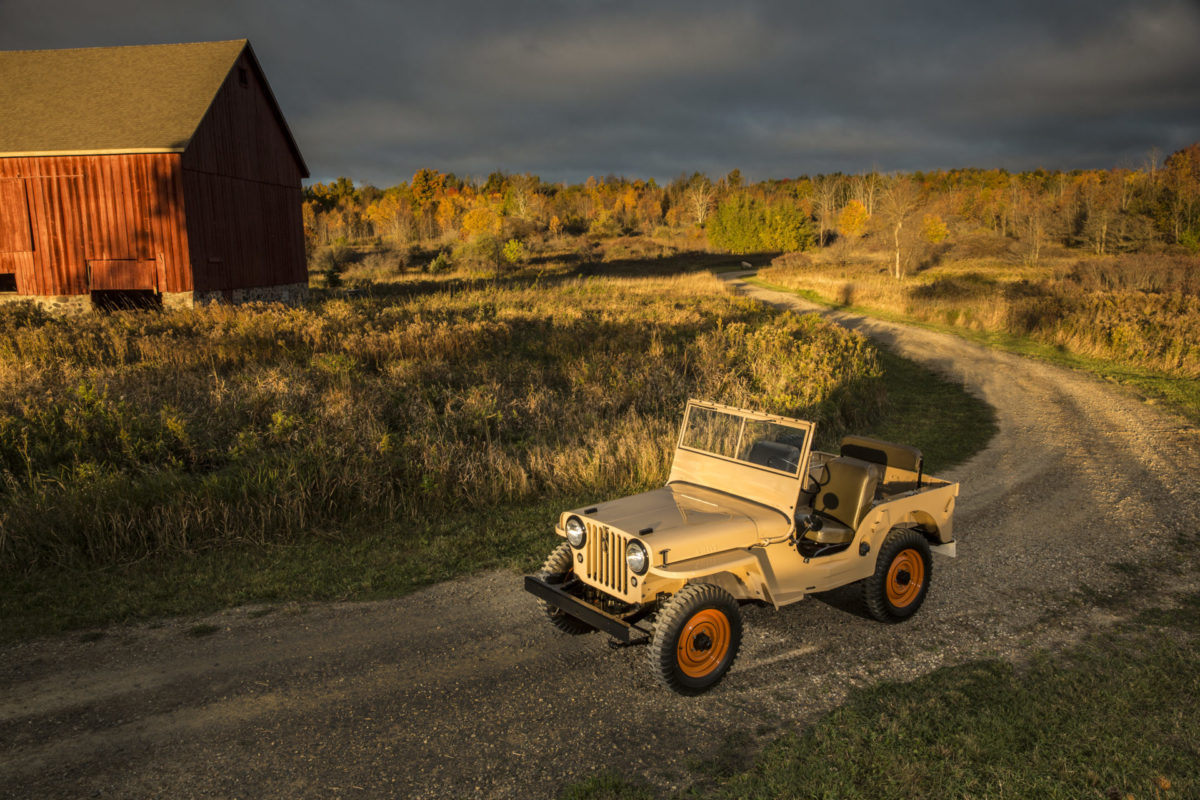
First-generation Jeep: YJ (1987-1995)
Almost immediately after the introduction of the YJ in 1987, Chrysler bought out AMC, the parent company of Jeep at the time. The YJ had several stark differences between it and its ancestor, the CJ.
The first difference was that the acronym YJ didn’t stand for anything, unlike CJ. Also, it was on-road focused as opposed to the CJ’s rugged off-road emphasis. The YJ was wider, had slightly less ground clearance, had anti-roll bars, and track-bar suspension. All these improvements not only increased handling but also made it harder to flip.
However, Jeep owners believe the worst of these changes were the headlights. It had square headlights instead of round. The YJ is most easily distinguished from the previous CJ-7 by its square headlights, larger windshield, grille, and wipers that rest on the windshield.
First-generation Engines
2.5L AMC 150 I4
The standard engine offered for the YJ was the AMC built 2.5L I4. This engine was offered for every model year of the YJ generation. Note that if you plan on driving the YJ at highway speeds, the 2.5L is subpar, especially when coupled with the three-speed transmission.
However, due to its remarkable reliability, if your intention is just to take it around town, it will do great.
- MPG
- Five-speed Manual (Combined/City/Highway): 17/16/19
- Three-speed Automatic (Combined/City/Highway): 16/15/17
- Specs
- Horsepower: 117
- Torque (lb.-ft.): 135
- Transmission Options: The 2.5L I4 was offered with two transmissions. Initially, the AX-5 and later the 30RH. The AX-5 was a five-speed manual, it was mated to the I4 for all model years. Whereas, the three-speed automatic Torqueflite 30RH was only offered for the 1994-1995 model years. If you decide to opt for the 2.5L I4, the five-speed transmission is the way to go.
- Problems: The biggest problem with the 2.5L I4 is its low power output.
- Significant updates:
- In 1991, the 2.5L I4 received a three-horsepower bump and four lb.-ft. of torque increase. This was thanks to a new multi-point fuel injection (MPFI) system as opposed to the old throttle body injection (TBI) system.
4.2L AMC 258 I6
The 4.2L I6 was the largest engine offered on the YJ. It was around for the first three model years (1987-1990) until it was replaced by the smaller 4.0L I6 in 1991. As opposed to the I4, the I6 offers drivers plenty of power for off-roading. Considering that the 4.2L I6 offered gas mileage comparable to the 2.5L I4, you won’t have to worry about it burning too big of a hole in your wallet.
- MPG
- Five-speed Manual (Combined/City/Highway): 17/15/20
- Three-speed Automatic (Combined/City/Highway): 14/14/15
- Specs
- Horsepower: 112
- Torque (lb.-ft.): 210
- Transmission Options: The 4.2L I6 saw three different transmissions fixed to it. The 32RH three-speed automatic transmission was offered for all three model years. Although very similar to the 30RH offered on the I4, the 32RH had a lockup torque converter and was more durable. However, two different five-speed manual transmissions were offered. First, the problematic BA-10 from 1987-1989, then the AX-15 for 1990.
- Problems: The biggest problem with the 4.2L I6 is that it’s carbureted. Although it’s no secret that carbureted engines are easier to fix, overall they can’t compete with fuel injection. Fuel injection beats out a carburetor in both fuel economy and performance. Also, the BA-10, offered from 1987-1989 is very unreliable. Note, the automatic transmission only offers three speeds. Thus, the transmission of choice for the 4.2L I6 is the five-speed manual AX-15, offered for the 1990 model year only.
4.0L AMC 242 I6 (Recommended)
The 4.0L I6 replaced the 4.2L I6 for the 1991-1995 model years. Although it had a smaller displacement, it brought with it a significant power increase. Perhaps most importantly it was fitted with MFPI as opposed to the carbureted 4.2L I6.
The 4.0L I6 engine is revered as one of the best engines ever offered by many Jeep enthusiasts. This is because of its notable reliability. The secret to success for the I6 is that it is well balanced and does not “fight itself” like a traditional v-shaped engine.
- MPG
- Five-speed Manual (Combined/City/Highway): 15/14/17
- Three-speed Automatic (Combined/City/Highway): 14/14/16
- Specs
- Horsepower: 180
- Torque (lb.-ft.): 220
- Transmission Options: The 4.0L I6 picked up right where the 4.2L I6 left off with the same two transmission options. Being the AX-15 five-speed manual and the 32RH three-speed automatic.
- Problems: The only notable problem with the 4.0L I6 would be if it were mated to the wrong transmission. As stated previously, the three-speed automatic simply does not offer enough gears to get the job done, so the five-speed manual is the way to go.
Second-generation Jeep: TJ (1997-2006)
Jeep decided not to release a Wrangler for the 1996 model year, waiting until 1997 to roll out the new TJ. Thankfully, Jeep enthusiasts could put down their pitchforks and return to the brand they loved, as the new Jeep had round headlights yet again. Jeep tried to make the TJ even more capable on the road than the previous Wrangler.
They reduced the drag coefficient by .07, although no one would describe it as aerodynamic. Also, to make it more comfortable, they replaced the old leaf springs with a new coil-spring suspension. Interestingly, it kept the exact same engines that were offered on the TJ, the 2.5L I4, and the 4.0L I6.
It’s a valid argument that the TJ was just an updated YJ, rather than a completely new generation. However, the TJ came with some key refinements that need to be considered. These include a quadra-coil suspension, dual airbags, optional ABS, and of course those round headlights. Jeep made the driving experience more pleasant with reduced noise, vibration, and harshness (NVH).
However, these improvements do not mean the second-generation Jeep was nothing more than a comfortable grocery-getter, it still very much rode like its military predecessor.
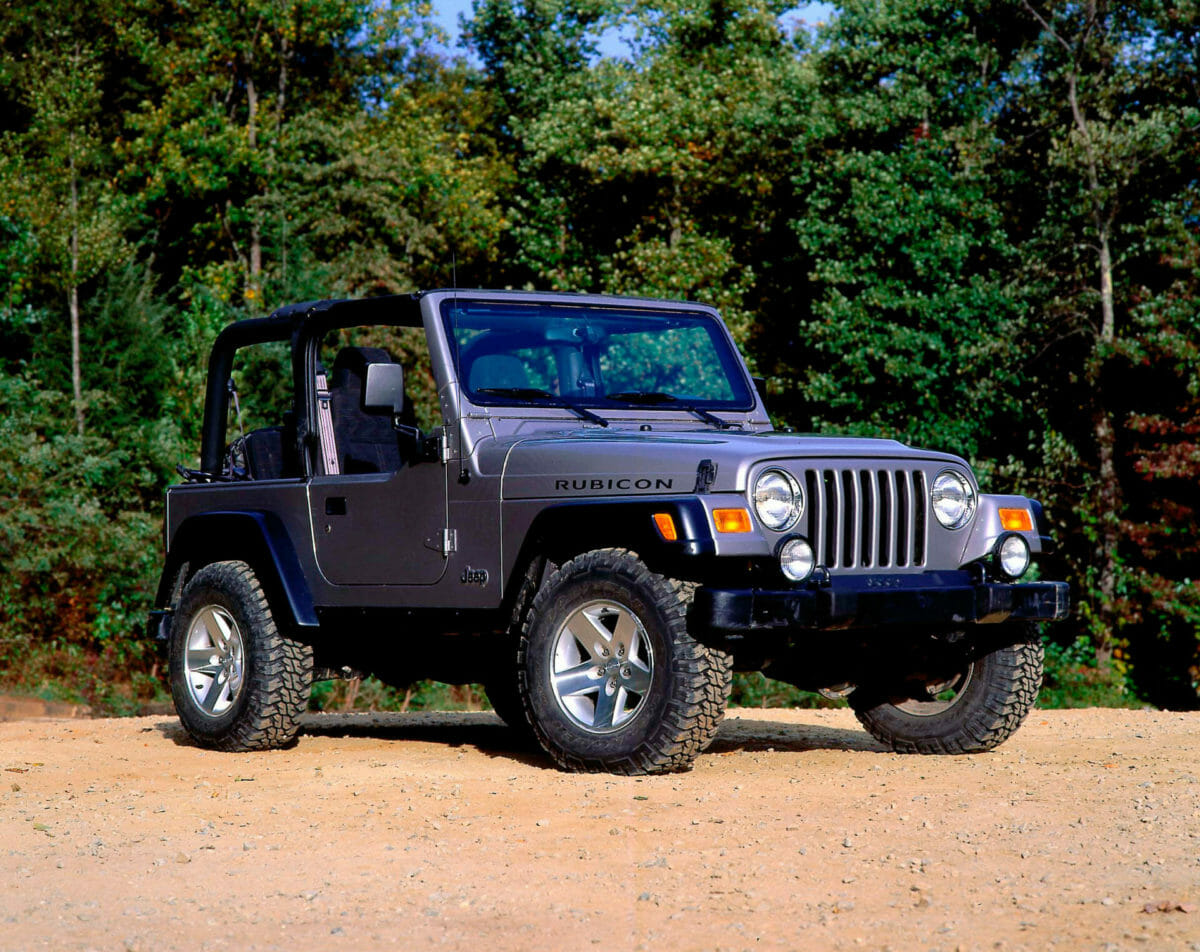
Second-generation Engines
2.5L AMC 150 I4
The standard engine remained the AMC built 2.5L I4. This engine was offered for the 1997-2002 model years. As is the same with the YJ, if you plan on driving the TJ at highway speeds, the 2.5L is subpar, especially when coupled with the three-speed transmission.
However, due to its remarkable reliability, if your intention is just to take it around town, it will do great.
- MPG
- Five-speed Manual (Combined/City/Highway): 17/16/19
- Three-speed Automatic (Combined/City/Highway): 16/14/17
- Specs
- Horsepower: 120
- Torque (lb.-ft.): 140
- Transmission Options: The 2.5L I4 was offered with two transmissions, the AX-5 and later the 30RH. The AX-5 was a five-speed manual, it was mated to the I4 for all years (1997-2002). This is the same for the three-speed automatic Torqueflite 30RH. Again, if you decide to opt for the 2.5L I4, the five-speed transmission is the way to go.
- Problems: The biggest problem with the 2.5L I4 is its low power output.
2.4L Powertech I4
The 2.4L Powertech I4 took over for the AMC built 2.5L I4 in 2003. Although the displacement was significantly lower, the performance increased drastically. Although we wish we could say this new engine was an improvement, it just wasn’t.
The 2.5L was a sturdy mule, whereas the 2.4L was unqualified for the job. Let’s play a game of “one of these doesn’t belong here” for the things the 2.4L engine powered; the Jeep Wrangler, Jeep Liberty, and Chrysler PT Cruiser.
Engines have been placed in different vehicles since the beginning of time, however never should a rugged off-roader share an engine with a PT Cruiser.
- MPG
- Four-speed Automatic (Combined/City/Highway): 17/16/18
- Five-speed Manual (Combined/City/Highway): 17/16/18
- Six-speed Manual (Combined/City/Highway): 17/16/19
- Specs
- Horsepower: 147
- Torque (lb.-ft.): 165
- Transmission Options: The 2.4L I4 was paired to three different transmission options. The 42RLE was the four-speed automatic transmission offered for all years, 2003-2006. For 2003-2004 a five-speed manual NV1500 transmission was offered. This was followed by a six-speed manual transmission, the NSG370. Due to problems on both the four-speed automatic and the six-speed manual, the five-speed manual transmission is the way to go.
- Problems: Similar to the 2.5L I4, the biggest problem with the 2.4L I4 is its low power output. Furthermore, the new engine wasn’t nearly as reliable as its predecessor. Also, the 42RLE is moderately reliable and common problems for this transmission are overheating and shifting problems. The six-speed manual would also pop out of both first and reverse, making it a poor choice. Finally, and perhaps most important of all, it was also used in the PT Cruiser. Which in itself is reason enough not to opt for the 2.4L I4.
4.0L AMC 242 I6 (Recommended)
The 4.0L I6 carried over from the YJ’s engine options. The 4.0L I6 engine is revered as one of the best engines ever offered by many Jeep enthusiasts. This is because of its notable reliability. The secret to success for the I6 is that it is well balanced and does not “fight itself” like a traditional v-shaped engine.
- MPG
- Three-speed Automatic (Combined/City/Highway): 14/13/16
- Four-speed Automatic (Combined/City/Highway): 16/14/18
- Five-speed Manual (AX-15) (Combined/City/Highway): 16/15/19
- Five-speed Manual (NV3550) (Combined/City/Highway): 16/15/17
- Six-speed Manual (Combined/City/Highway): 15/13/17
- Specs
- Horsepower: 190
- Torque (lb.-ft.): 235
- Transmission Options: The TJ’s 4.0L I6 picked up right where the YJ left off with the same two transmissions. The three-speed 32RH automatic transmission hung around until 2002, whereas the five-speed AX-15 manual transmission was axed in 1999. For 2003-2006, the four-speed 42RLE that was offered on the 2.4L I4 was the automatic transmission of choice for the 4.0L as well. For manual transmissions, the NV3550 took over for 2004-2005, with the NSG370 bringing it home for the 2005-2006 model years.
- Problems: The only notable problem with the 4.0L I6 would be if it were mated to the wrong transmission. The six-speed manual shifts obnoxiously, and the three-speed lacks an adequate number of gears. Thus, a five-speed manual is a must for the 4.0L I6. Specifically, the NV3550 followed by the AX-15 as they are the most reliable of the bunch.
- Significant updates:
- In 2000, the 4.0L I4 engine was re-engineered making it quieter and more environmentally friendly.
- In 2001, the 4.0L I6 engine met low-emission vehicle (LEV) standards in all 50 states.
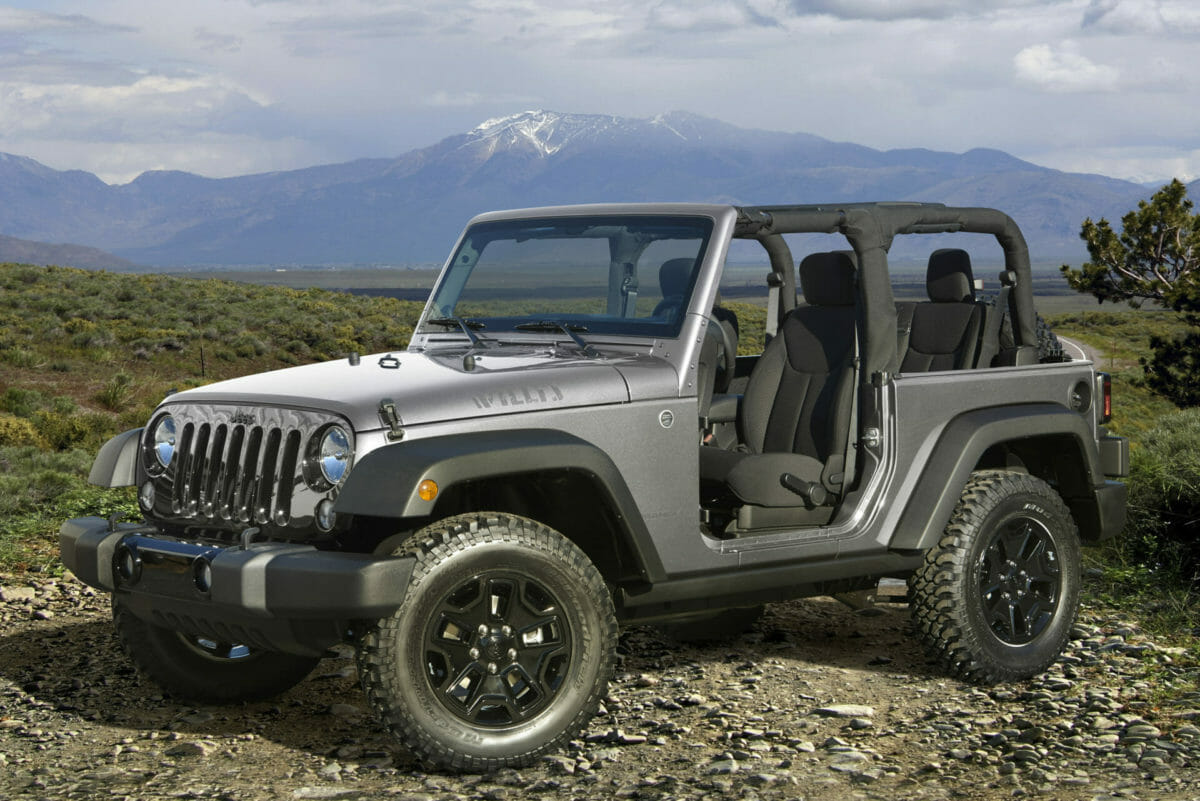
Third-generation Jeep: JK (2007-2018)
The new JK Wrangler hit the showroom for the 2007 model year. The new Wrangler brought with it great news, it would now be offered in a four-door version given the nomenclature Unlimited.
Compared to the TJ, the JK was taller, wider, and had a longer wheelbase. Thankfully, Jeep would add safety features to the new generation such as stability control and traction control. This was the first Wrangler designed without any AMC parts to be found on it. The JK was offered with an all-new 3.8L V6. Many found the new generation Wrangler more comfortable than the last.
However, it did not lose its off-roading ability. Similar to previous Wranglers, the JK donned the fold-down windshield, removable doors, and a roll bar. However, to improve aerodynamics, the windshield glass was slightly curved. The JK weighed in over half of a ton more than the previous generation.
Third-generation Engines
3.8L EGH V4
For the new generation Wrangler, Jeep decided to simplify its engine offerings, making the 3.8L V6 engine the only option. Interestingly, the 3.8L V6 used in the new Wrangler can be traced back to 1991 Chrysler minivans. This new engine was mated with the familiar NSG370 six-speed manual transmission or optional 42RLE four-speed automatic.
- MPG
- Four-speed Automatic (Combined/City/Highway): 16/14/18
- Six-speed Manual (Combined/City/Highway): 16/15/18
- Specs
- Horsepower: 196
- Torque (lb.-ft.): 232
- Transmission Options: Similar to the later model 4.0L I6 TJ’s, the 3.8L V6 was paired to two transmission options. Both the four-speed 42RLE automatic transmission, and the six-speed NSG370 manual transmission were offered for all years, 2007-2011. However, due to problems with the four-speed automatic, the six-speed manual transmission is the way to go.
- Problems: The biggest problem with the 3.8L V6 engine was not only the lack of power but also the lack of reliability. A lack of power was unsurprising as Chrysler sourced the engine from an antiquated minivan. Then, the lack of reliability can be chalked up to a host of factors, excessive oil consumption, and a faulty Totally Integrated Power Module being the most prevalent.
- Significant updates:
- In 2009, Wranglers fitted with the manual transmission were now categorized as an ultra-low emission vehicle (ULEV) II.
- In 2001, the 4.0L I6 engine met low-emission vehicle (LEV) standards in all 50 states.
3.6L Pentastar V6 (Recommended)
When the 3.6L replaced the old 3.8L, Jeep owners worldwide rejoiced. No longer was the Wrangler powered by an engine that was 20 years old. Nor did they have to worry about being overtaken by a sloth. Not only did the 3.6L change everything for the Wrangler’s performance, but it was also from the 21st century. This new engine meant fewer trips to the gas pump as well.
- MPG
- Five-speed Automatic (Combined/City/Highway): 18/16/20
- Six-speed Manual (Combined/City/Highway): 18/16/21
- Specs
- Horsepower: 285
- Torque (lb.-ft.): 260
- Transmission Options: Yet again, the NSG370 would return as the standard transmission for the Wrangler. For the first time ever, the Wrangler could be fitted with a five-speed W5A580 automatic transmission. Either of these transmissions are very solid options and have no notable problems when it comes to reliability.
- Problems: Unfortunately, the new engine started out rocky in the new Wrangler. Problems varied; however, some vehicles required a head replacement or a module replacement. However, Jeep fixed these problems by the 2015 model year, so the 2015-2018 JK engines are very reliable.
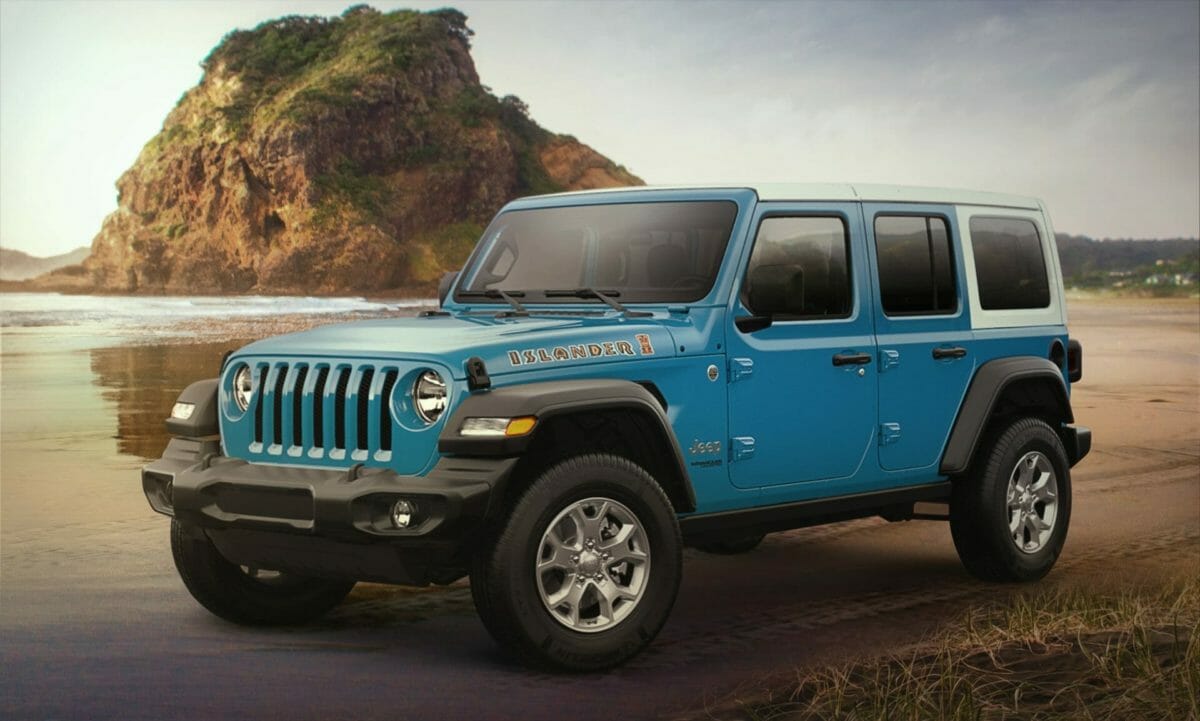
Fourth-generation Jeep: JL (2018-Present)
The new fourth-generation Wrangler received the nomenclature of JL. In 2018, the JL was sold alongside the previous-generation JK. Aesthetically, the third and fourth generations are very similar. There are few styling cues to identify the two. The fourth-generation Wrangler had efficiency at the forefront of its design.
For example, the tailgate is now made of magnesium, and the doors, hood, and windshield frame are made of aluminum to reduce weight. Although the standard engine remains the 3.6L V6, a new 2.0L I4 turbo engine is optional. This new four-cylinder engine has 15 fewer hp than the six-cylinder. However, it gets four more combined mpg than the six-cylinder, being 24 and 20 respectively. The JL comes standard with a six-speed manual or an eight-speed automatic transmission.
Fourth-Generation Engines
3.6L Pentastar V6 (Recommended)
The 3.6L V6 returns as the standard engine for the JL Wrangler. Although Jeep didn’t tweak the performance of the block, they did up the MPG.
- MPG
- Eight-speed Automatic (Combined/City/Highway): 20/18/23
- Six-speed Manual (Combined/City/Highway): 20/17/25
- Specs
- Horsepower: 285
- Torque (lb.-ft.): 260
- Transmission Options: A new six-speed Aislin D478 manual transmission was fitted to the 3.6L V6 for the new JL generation. The new transmission is much smoother than the last, however, it has already been recalled for an overheating clutch plate. Also, a new eight-speed Torqueflite 850RE automatic transmission made its debut for the new generation.
- Problems: Since the 3.6L V6 engine has been on the market for so long, its reliability is rock solid. However, both of the new transmissions seem to be its Achilles heel. While it is still too soon to tell whether they are unreliable or not, they both have been in some hot water. The manual has already been recalled once and the German-made automatics have also been under fire.
2.0L Hurricane I4-T
It’s very obvious with the engine options for the JL that Jeep had the environment on their mind when they released the new Wrangler. The first fuel-sipping version they released was the 2.0L Hurricane I4 turbo.
- MPG
- Eight-speed Automatic (Combined/City/Highway): 24/23/25
- Specs
- Horsepower: 270
- Torque (lb.-ft.): 295
- Transmission Options: Only the eight-speed Torqueflite 850RE automatic transmission is fitted to the Hurricane motor.
- Problems: Although the new engine offers a significant mpg boost, there are valid problems with this engine. Although it’s more fuel-efficient, it requires 91 Octane, meaning these savings might be for not. Also, it costs more than the 3.6L V6 and is too new to prove its reliability.
3.0L EcoDiesel V6-T
For 2020, Jeep released yet another environmentally friendly Wrangler engine option, the diesel. Not only did this new engine offer peace of mind for the environmentally concerned, but it also offered massive torque gains. However, this option is pricey, adding about $6,000 to the cost of any Jeep.
- MPG
- Eight-speed Automatic (Combined/City/Highway): 25/22/29
- Specs
- Horsepower: 260
- Torque (lb.-ft.): 442
- Transmission Options: Although the diesel engine gets an eight-speed automatic transmission it’s not the same one that’s in the others. It receives an 8HP75 transmission, which is better suited to lay down the torque compared to the 850RE.
- Problems: The new diesel engine and its transmission have proved to be reliable thus far. However, the diesel engine still has a small set of problems such as excessive noise, weight, and of course the price.
6.4L Chrysler Hemi V8
Jeep seemed to be only releasing fuel-efficient Wranglers with the Hurricane, EcoDiesel, and the 4xe. However, they took the world by surprise when they announced they’d be releasing a Rubicon with a 6.4L Hemi in it. Nicknamed the “Rubicon 392” it’s expected to hit showrooms sometime in 2021.
- MPG
- Eight-speed Automatic (Combined/City/Highway): Not yet rated
- Specs
- Horsepower: 470
- Torque (lb.-ft.): 470
- 0-60 MPH: 4.5 Seconds
- Transmission Options: The Rubicon 392 will only be offered with the eight-speed 8HP75 automatic transmission found on the EcoDiesel.
- Problems: Data not yet available.
4xe – Plug-in Hybrid
The final addition to the Wrangler’s eco-friendly line of Wranglers is the 4xe. The 4xe is a plug-in hybrid version of the 2.0L I4 turbo Wrangler. Like the Rubicon 392, it is expected to hit showrooms sometime in 2021.
- MPG
- Eight-speed Automatic (Combined/City/Highway): Not yet rated
- Specs
- Horsepower: 270
- Torque (lb.-ft.): 375
- Transmission Options: Unsurprisingly, the 4xe is expected to receive an eight-speed automatic transmission. Like the others it’s made by ZF, however, it is still in the development phase. Named the 8P75PH, it’s designed specifically for use in a plug-in hybrid.
- Problems: Data not yet available.
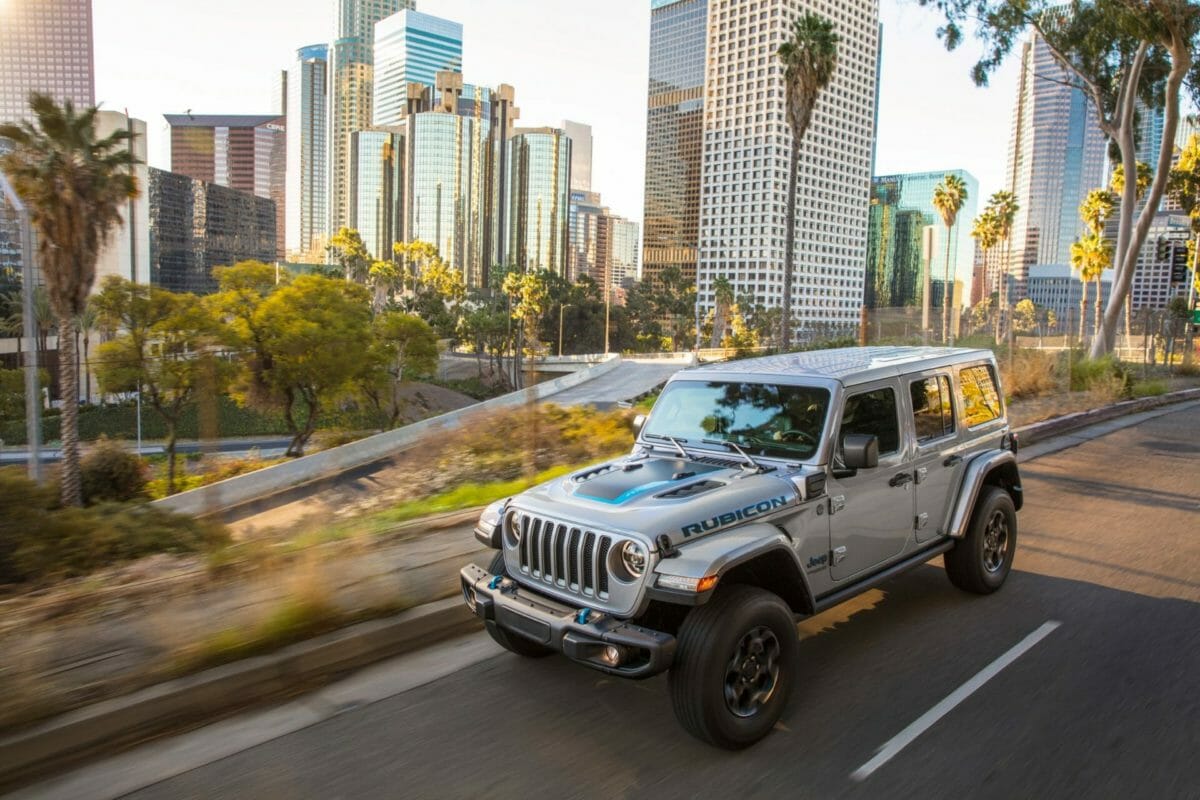
Wrangler Engine Options: Choosing the Right One
With the multitude of engines offered on the Wrangler, there’s certainly one to tickle any buyer’s fancy. With a new plug-in hybrid, diesel, and even Hemi options on the new Wrangler the engine lineup for the Wrangler grows even more diverse. While we don’t think you can go wrong with the classic 4.0L I6 or 3.6L V6 options, there are some Wrangler engines and transmissions to avoid.
For example, the 2.4L I4 (2003-2006) and the five-speed BA-10 manual (1987-1989) should be avoided at all costs. If you’re looking for an automatic Wrangler, the 2015-2018 model years have the best automatic transmissions offered on a Jeep. The guide above makes it simple to avoid buying a lemon of a Wrangler. If you’re in the market for a Wrangler, there’s no better place to look than Vehicle History.
Photos: Jeep
